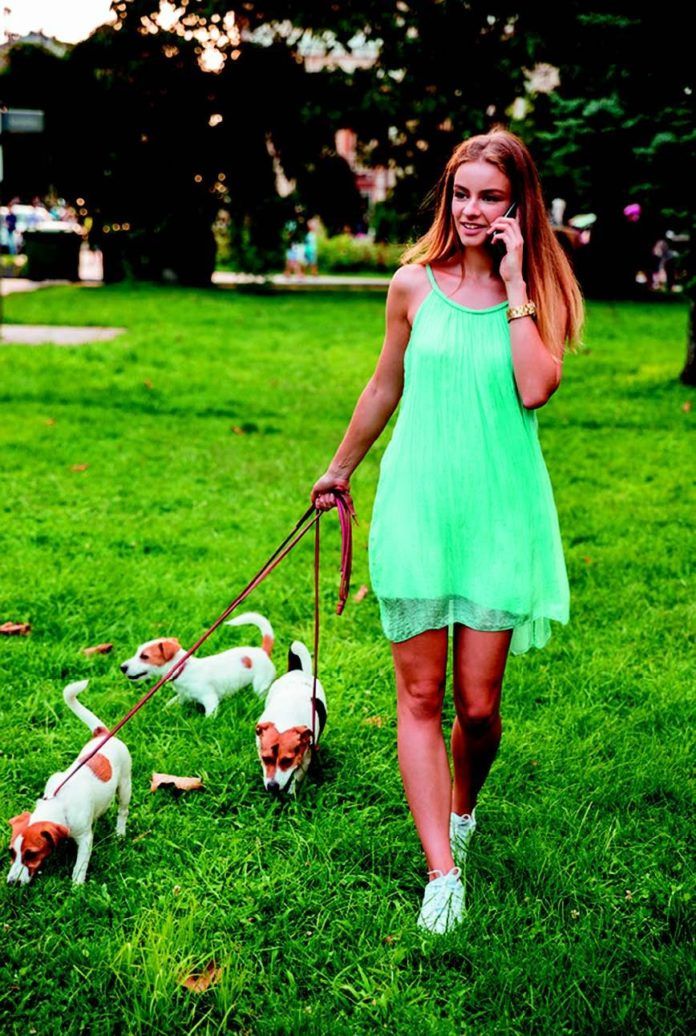In the August issue of Your Dog, we discussed that you’re never too old to enjoy sharing your life with a canine companion. But even good things can go awry if proper care is not taken to prevent falls, as was made evident in a report by University of Pennsylvania researchers drawn from nationwide data on dog-walking injuries among the 65-plus set. Injuries sending older dog walkers to emergency rooms rose more than 250 percent in the last 15 years or so, from nearly 1,700 in 2004 to just under 4,400 in 2017. Most of the injuries were said to have been caused by a loss of balance that ensued when a dog pulled too hard or suddenly on the leash.
Nearly 80 percent of the dog walkers were women. That’s concerning because women have less bone density than men, making fractures from falls more likely.
The solution is not to get rid of the dog. It’s to be better prepared.
Guidance for staying on your feet
Switch from a neck collar to a harness. Traditional neck collars attached to a leash make it all too easy for a dog to call the shots by pulling you this way and that at a faster pace than you feel comfortable with. But just a gentle tug on a harness, which holds a dog by his chest, prevents him from dragging you. (And there’s no trachea damage, which can happen with dogs who continually strain against a neck collar.) Once you put a harness on your dog, you’ll never go back to a neck collar.
Ditch the high heels and wingtips. Footwear for dog walking should be intended to prevent spills, that is, flat and comfortable. In icy conditions, which will come soon enough, wrap-around traction cleats make slippery ground safer.
Never wear a leash like a bracelet. The leash should not be worn around your wrist, which can sustain serious injury if your dog suddenly lunges or tries to chase down a dog or car. Keep the leash firmly in your hand. If your balance is unsteady, be aware that a shorter lead gives greater control. That’s why a retractable leash is not a good bet, particularly with larger dogs. Some of those thin, retractable leashes extend as far as 30 feet. Even 10 feet could be too much.
Stay in the moment. Texting or reading messages, talking on the phone, or scrolling through news stories will leave you unable to notice uneven terrain coming up or to quickly regain your balance once it has been lost. You also won’t see that your dog might be about to react to a squirrel, another dog, or another person. Even if safety weren’t an issue, your time walking with your dog should be we time, not me time. Chances are you don’t get to spend enough time enjoying activities with your pet in the first place. Why cut into that time even more?
Consider professional training. Dogs who pull despite your best efforts or who otherwise put you at risk by dashing at moving objects or lunging at other dogs may need training. (See the January 2018 issue for which kind of trainer/behaviorist to engage.)
Canine-Related Injury Hazards Extend Beyond Dog Walking — and Beyond the Elderly
Falling because of your dog is not just about things that happen while your pet is on leash. A report from the Centers for Disease Control and Prevention a number of years ago stated that many pet-related falls occur in and around the home. People trip over the dog’s food bowl or toys, or over the dog itself. People also trip and fall while playing with a dog or chasing it for fun.
Avoid fractures, sprains, strains, and other injuries by keeping your dog’s toys picked up (or making a game out of having him bring them to his special toy chest) and also by keeping food and water bowls out of household traffic patterns. And if your dog tends to shadow you, often lying in front of you or next to you, make sure he’s literally not underfoot as you move about. Finally, play only as hard with your dog as your balance will allow.





